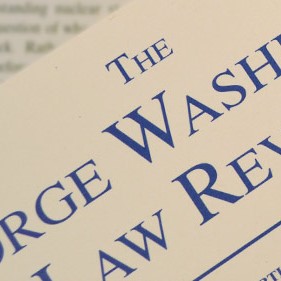Luke McCloud & David Rosenberg · February 2011
79 GEO. WASH. L. REV. 374 (2011)
In this Essay, we show why and how to apply the average of differing state laws to overcome the choice of law impediment currently blocking certification of multistate, federal diversity class actions. Our main contribution is in demonstrating that the actual law governing a defendant’s activities involving interstate risk is in every functionally meaningful sense the same, regardless of whether it is applied in disaggregated form, state-by-state at great cost, or in aggregated form, on average at far less cost. We refute objections to using the average law approach, including that average law subjects defendants to a law of which they lacked notice at the time of the underlying conduct, fails to accurately reflect and enforce the substantive differences among the governing state laws, and undermines the sovereign lawmaking power of states to enact their distinctive policy preferences. To facilitate use of the average law approach, we also sketch the means for practically implementing the average law solution in different types of class action to determine a defendant’s aggregate liability and damages.

